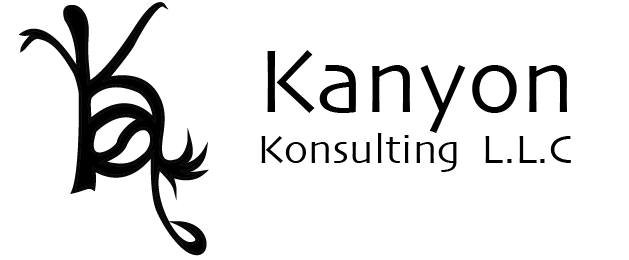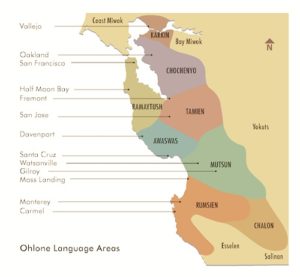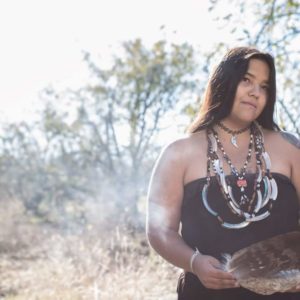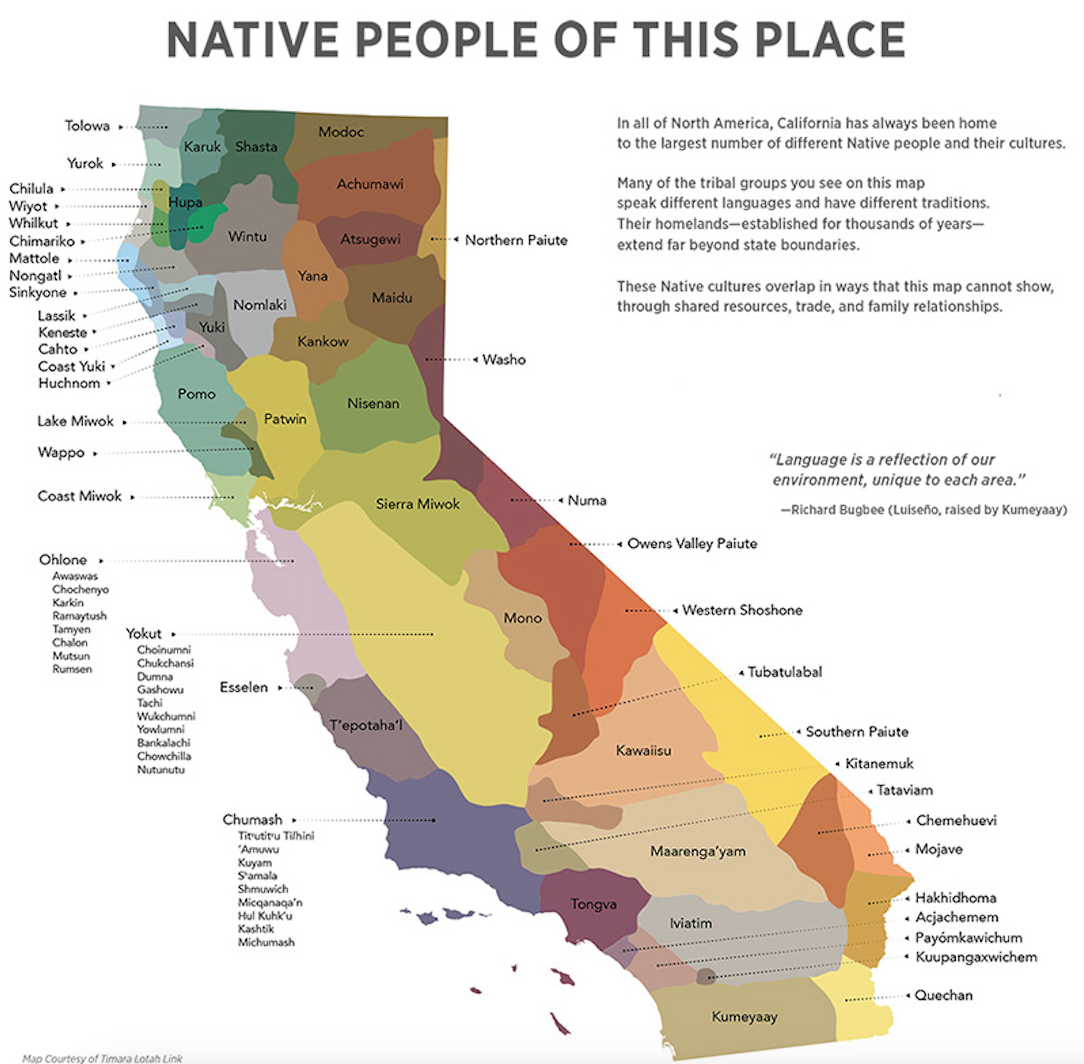
Kanyon here, wanting to offer a little indigenous insight – around researching “ohlone or costanoan, or any indigenous peoples of the bay area”
Original Source – Support Kanyon via Patreon
When people take a moment to learn about the History of the territory (here in the Bay Area), and they want to learn or present about the local inhabitants before contact. There is a fair amount of information out there — that is challenging to access.
Many of the current resources immediately speak from an outsiders perspective – An author speaks of the Ohlone or Costanoan People as “OTHER”…… the Ohlone people are the others – they did things like that – and the Ohlone people are not here. These books may use phrases like, “were” or “used to”, completely eliminating the potential of modern day existence, some of my Indigenous cousins say this is a willful act of ignorance and contributes to cultural genocide.
Many books claim the Natives were hunter-gatherers – which tends to simplify and diminish the long-held integral relationship the indigenous people had and continue to have with the land. Native peoples have been stewards of the land for thousands and thousands and thousands of years. Tending the land, managing the land, true ecology, and management – from control burns to harvesting resources – to maintaining balance with the environment – witnessing the plants and animals as kin and relational lifeways.
Many timelines around native peoples tend to focus on Colonial contact when “History” started. Ask an archaeologist, what was history[referred to as] before European contact, they will say PREHISTORIC, I would venture to say – If we ask anyone at the store what the first thought comes to mind when they hear the word “Prehistoric” and I may assume they would say “dinosaurs”. One can conclude that this can be dismissive of Indigenous peoples, and their perspectives in the world today and of the past.
There is a practice of etiquette that has transpired internationally for many generations, a practice that Indigenous peoples have maintained and many still follow its guidelines and learn about new respectful ways of interacting – It’s Indigenous Protocol. Very similar to what society in America has learned about visiting a neighbor, if they wanted to talk or borrow a cup of sugar, the first gesture of etiquette is to …. knock on the door for consent to enter and inquire. Indigenous people who have been maintaining and stewarding the land of their ancestors and family respect various boundaries of what they consider their territory and the territory of their neighbors. When visiting an area that is not of one’s own ancestry, its common courtesy to visit respectfully – if the intent is to come in a good way. To honor indigenous protocol is to seek permission from the local indigenous peoples and acknowledge them as living.
– Check out a recent post –
How do you claim indigeneity on STOLEN LAND
Connection on|in a place NOT of one’s own ancestry
Alliyship is not an identity—it is a lifelong process of building relationships based on trust, consistency, and accountability with marginalized individuals and/or groups of people. allyship is not self-defined—our work and our efforts must be recognized by the people we seek to ally ourselves with.
Ohlone Solidarity Pocket Guide by ACORN.WIKI
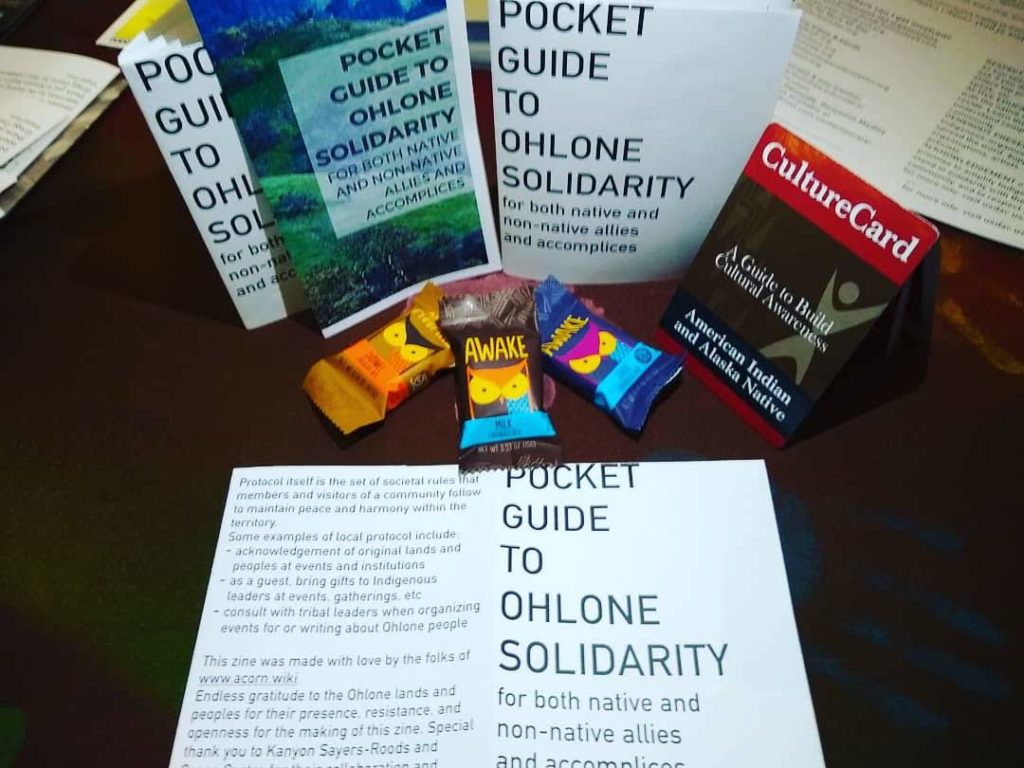
11×17 Pocket Guide Document -Access the file – click/enlarge/download – print & play
We appreciate community [Allies, Accomplices, Advocates] stepping up and educating themselves about the Indigenous Communites around them. To learn about the first history of the land – before contact. The Indigenous Communities that have been the stewards of the land since time immemorial. Download the first draft – Ohlone Solidarity 2018
Learn. Learn. Learn. Share. Share. Share
I want to offer a book recommendation list. To offer perspective.
OHLONE CURRICULUM free teachers resource
https://www.ebparks.org/activities/educators/ohlone_curriculum.htm
- An American Genocide The United States and the California Indian Catastrophe, Benjamin Madley
- Resurrecting the past, The California Mission Myth, Michelle M. Lorimer, PhD
- American Holocaust: The Conquest of the New World, David Stannard
- Tending the wild, Kat Anderson
- The Ohlone Past and Present: Native Americans of the San Francisco Bay Region (Ballena Press Anthropological Papers ; No. 42)- Lowell John Bean
- The Dirt is Red Here, Art and Poetry from Native California Edited by Margaret Dubin
- First Families A Photographic History of California Indians, L Frank and Kim Hogeland
- The Morning the Sun Went Down, Darryl Base Wilson
- Indians and Intruders in Central California 1786-1849, George Hardwood Phillips
- Grave Matters Excavating California’s Buried Past, Tony Platt
- If the Truth Be Told Lessons of the Innocence Denied, Cases in California Genocide 1852-1887, Edited and introduction by Jack Norton Author Genocide in Northwestern California
- The Destruction of California Indians, Robert E. Heizer
- A Gathering of Voices, The Native Peoples of the Central California Coast
- Indians of California The Changing Image, James J Rawls
- The Ohlone Way – Indian Life in the San Francisco-Monterey Bay Area, Malcolm Margolin Illustrated by Michael Harney
- Bad Indians A Tribal Memoir, Deborah A. Miranda
- Life in a California Mission Monterey in 1786 – A California Legacy book, The Journal of Jean Francois de la Perouse
- An Indigenous Peoples History of the United States, by Roxanne Dunbar-Ortiz
- Indian Summer – Traditonal life among the Choimumni Indians of California’s San Joaquin Valley, Thomas Jefferson Mayfield
- The Modoc War – A Story of Genocide at the Dawn of Americas Gilded Age, Robert Aquinas McNally
- Indian Water Policy in a Changing Environment
- We Are Dancing for You, Dr.Cutcha Risling Baldy
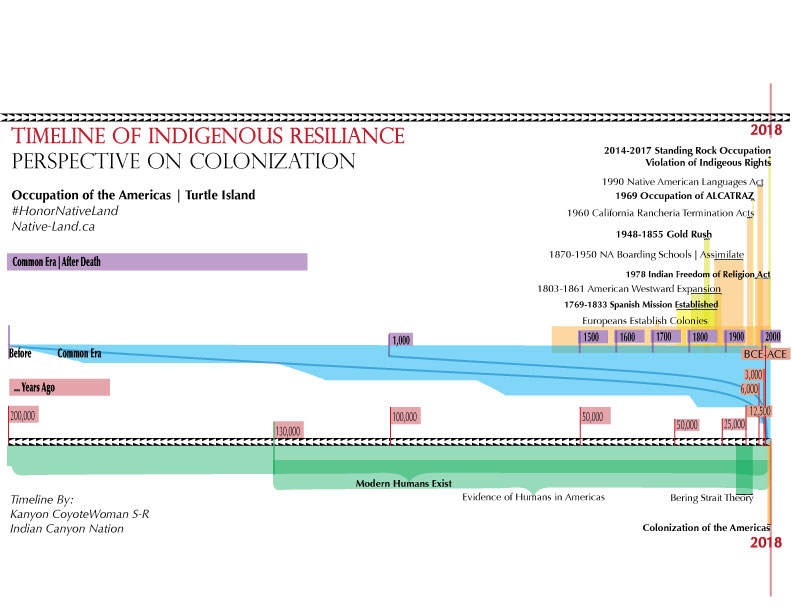
I love this Image [below] “Native People of this Place” By Timala Link – and website, voicing John Muirs perspective and ….how Hindsight give clarity, about how wrong people are now, though in the time people followed and believed in them thought everything they presented was right…
Take for example – Krober – saying there is no more living Costanoan Indians (when now we know, that is not true)
….See link—- https://www.kcet.org/shows/tending-the-wild/what-john-muir-missed-the-uniqueness-of-california-indians?
We need truth in history and commitment to voicing and allowing other
Voices to offer perspective
Solidarity Brochure for an Ohlone Miwok Event I helped host last month.
https://drive.google.com/drive/u/1/folders/19W0HsFwE1SBPmLFISWqduBb5uuo7jWYi
Time lapse Interactive Map about Missionization in the Bay Area
http://farwestern.maps.arcgis.com/apps/MapJournal/index.html?appid=7e23273533a8483697ae102ac9b9d114
#HonorNativeLand
https://native-land.ca/
Recent Film
Ohlone people : Survivance to Thrivance
https://www.youtube.com/watch?v=6nAk_-b-pKw
Support Kanyon on Patreon

